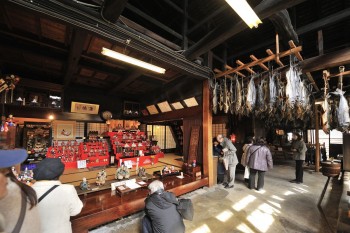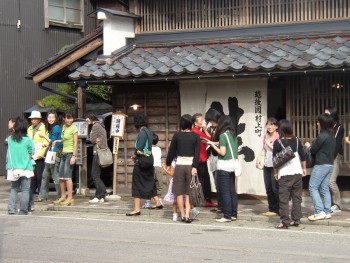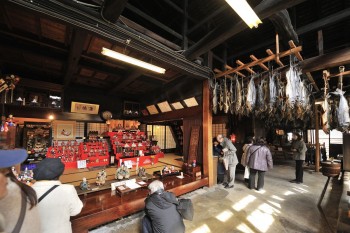Mecenat Activities
Murakami Machiya Merchants Association
- Purpose:Local Promotion by Culture
- Other Purpose:
- Genre:local development
The old merchants quarter in an old castle town of Murakami still possesses a number of machiya, old wooden houses. Behind its façade each shop hides a peculiar space which one would hardly imagine from the outside arcade or aluminium sashes.
In 1995 a development project for the old merchants quarter in Murakami was conceived. Shinji Kikkawa, whose family restaurant Misho Kikkawa is famous for serving the local traditional salmon cuisine, started visiting shopping streets across the country after hearing that shopping streets would “decline by modernization” from Daisuke Igarashi of the Japanese Association for Machinami Conservation and Regeneration. After this tour, Kikkawa came to the conclusion that machiya were a very important asset and a symbol of the city of Murakami and decided to revitalize the city utilizing machiya.
22 old-established businesses of the city approved of the machiya movement and set up the Murakami Machiya Merchants Association. Their first initiative was to open machiya to the general public. Visitors are invited to look around inside the machiya houses, where the residents explain their living space. The more attention this way of receiving visitors attracts, the more tourists come and hang around the quarter, and the local people understand that machiya is a prime tourism resource.
Trying to attract more attention to machiya, the Association organized a spring-time event “Ningyosama-meguri [dolls tour],” for which the machiya residents-owned dolls were exhibited in their own living room. And in autumn the following year, started “Byobu-matsuri [screen festival],” a revival of an old custom of setting screens as a festive interior decoration. Every year some 70 houses participate in these events. Not only the local merchants, but also school children, the near-by hot-spring inns, public transportation companies and the administration offices work together to welcome as many as 100,000 tourists.




